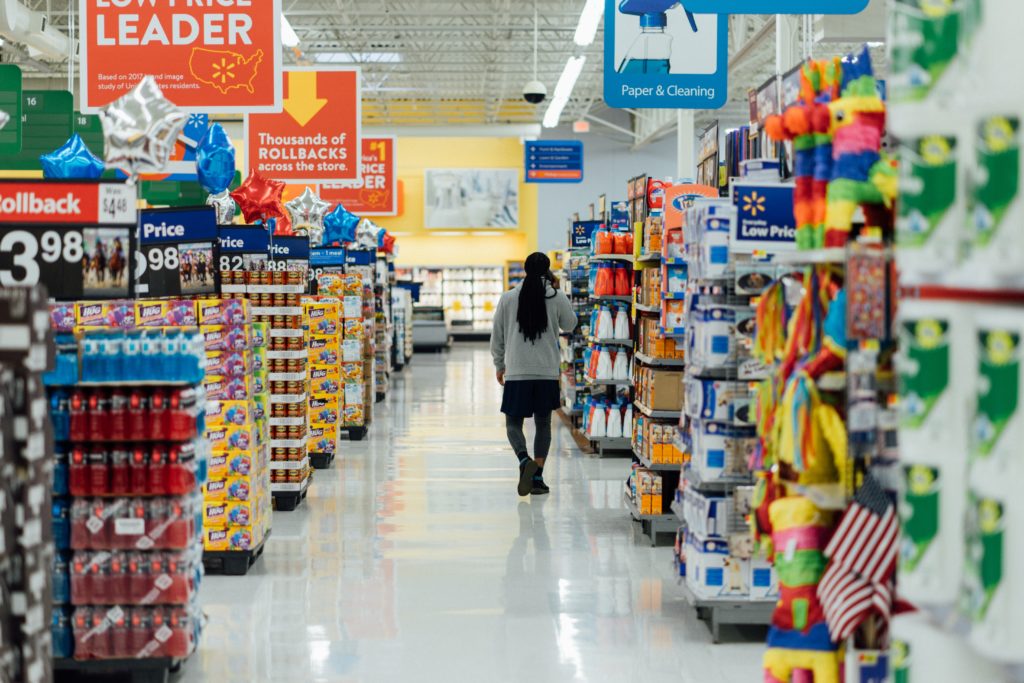When you walk into a store looking for a product, you want to be able to find it easily. You don’t want to have to hunt all over the store to figure out where the product is located or if the product is even available.
The same is true for ecommerce. When you search for a product you want to easily find what you’re looking for on the digital shelf.
The way products are presented in-store is on a shelf. The image of the digital shelf is a metaphor, mapping the in-person experience onto the ecommerce shopping experience. The digital shelf is the way products are displayed online.
The digital shelf is all of the ways a customer can interact digitally with your products, including on marketplaces like Amazon and Walmart.com, your DTC website, shoppable social media, and digital ads both on and off marketplaces.
Why does the digital shelf matter?
The digital shelf matters because it determines whether a product can be found and purchased online.
Greater than two-thirds of all purchases on Amazon come from the first page of search results, and in fact, a third of purchases come from just the first two rows of results.
In an increasingly omnichannel world, the digital shelf also influences offline purchases. Many shoppers turn to Amazon to research products they plan to purchase in-store.
A strong presence on the digital shelf leads to a strong ecommerce and brick-and-mortar performance.
Finding the shelf
When you go into a store looking for a particular product or type of product, you might ask a store employee, “Where can I find cat food?” or “Do you sell Air pods?”
The employee will give you directions or even escort you to the location in the store where you can find the product. You’ll be able to see the product on the shelf and you’ll also see near it on the shelf competitor products and perhaps also complementary products.
In the digital world, every keyword search is like asking that employee how to find something. Every keyword search result is the store worker (search result page) telling the shopper where to look.
The shopper goes to Amazon or Walmart.com and types into a search bar “cat food” or “Air pods.” The marketplace’s search algorithm then works to match them with products on a search results page that will suit their needs, based on relevancy and other data points.
The shopper then chooses a product to click on, based on many possible influencing factors, including position, price, or ratings. Clicking on that product will take them to a product detail page where they can learn more about the product, at the same time be exposed to alternatives, and make a purchase decision.
Buy more real estate on the digital shelf
You can claim more space for your products on the shelf through strategic advertising. Acquiring more digital space through advertising means using ads to increase the frequency of appearance but also the location of appearance within search results or on other pages.
To tie this back to the old-fashioned shelf in a store, it’s usually best to display products at eye level because the products at eye level are the ones most likely to get tossed in the shopping cart.
On marketplaces like Amazon and Walmart, sponsored placements get your products the best shot at occupying not only the most real estate but the best real estate on the first page of search and above the fold.
The most sophisticated ad campaigns will be designed to mimic a store worker who listens very closely to the shopper’s request and knows exactly which product to point them toward.
These ads will target the keywords most likely to result in conversions. They can also strategically target competitor’s products to steal customers away from those competitors.
Optimize your presence on the digital shelf
Many factors go into achieving the best digital shelf presence possible. Positive reviews and ratings increase the likelihood of matching with a search query. So do competitive prices. And it’s always important to have products in stock.
In a brick-and-mortar store, the packaging of a product doesn’t just provide a way to carry that product — it’s part of the selling strategy.
Its size, style, and material convey information about the product. The pictures and words on the packaging answer questions a shopper might have about what’s inside.
On the digital shelf, the packaging is made up of the product detail page. The headline, bullet points, images, and so on tell the story of the product and help a consumer to decide to purchase.
So, an important element of a successful digital shelf strategy is optimizing the digital version of packaging.
Takeaways
The digital shelf is the ecommerce equivalent of the store shelf. Unlike a physical shelf that occupies a specific fixed and limited space, it’s limitless and constantly in flux.
The more your product is placed in the most valuable places on the shelf, the stronger your ecommerce presence and the more likely your business is to flourish online.
Claim the most and best space on the digital shelf by optimizing product offerings across all your digital channels, conducting competitor research to understand your product’s relative position, and leveraging strategic ad strategy.
For a limited time, get a free Amazon Market Intelligence consultation powered by Flywheel 2.0 technology.





